Cousin is known as a haven for nesting seabirds in particular the White tern, Whitetailed tropicbird, Brown and Lesser noddys, Bridled terns, Tropical shearwaters and Wedgetailed shearwaters. Throughout the year, visitors to Cousin are treated to the sight of nesting seabirds. Some birds are year-round breeders, others have particular breeding seasons. Any season, be prepared for the sights, sounds and smells of seabird breeding, and even for the occasional dropping! (some say it’s good luck!)
White tern
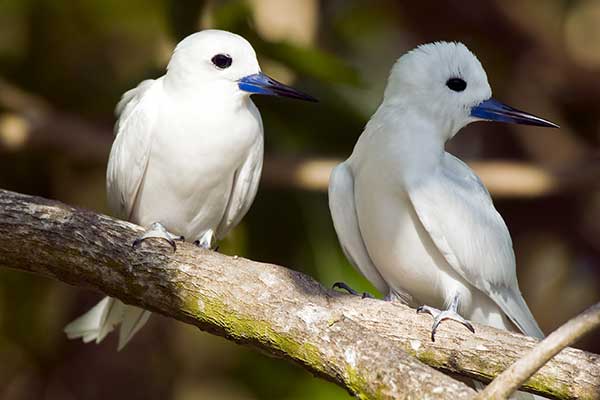
White tern / Golan / Gygis alba
Once common throughout the granitic islands, White terns now prefer to breed on islands free from rats, cats and Barn owls, such as Cousin, where about 4,000 pairs nest on the island each year. All year round, pairs can be seen incubating eggs balanced precariously on the branches of the trees throughout the plateau. Rather than feeding their chicks on regurgitated fish like most other seabirds, White tern parents provide their young with fresh, whole fish, caught in the waters around Cousin.
White-Tailed tropicbird
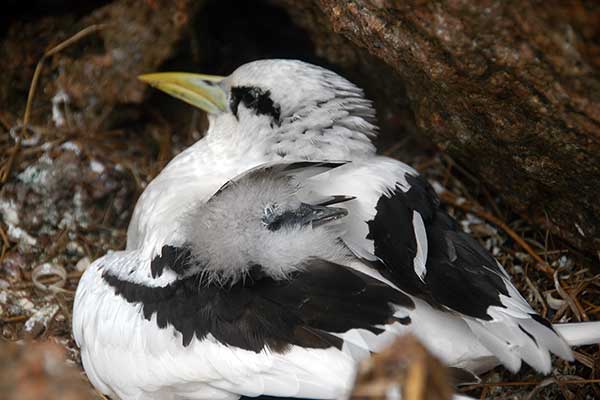
White-tailed tropicbird / Payanke / Phaethon lepturus
This spectacular seabird is found throughout the tropical waters of the Indian, Pacific and Atlantic Oceans. They fly far out to sea and dive for their food of flying fish or squid. They are common on rat-free islands like Cousin, Cousine, and Aride. White-tailed tropicbirds breed year-round, each pair nesting in a tree hole or sheltered side on the ground. The chicks get quite fat, not fledging until they are 70-80 days old, and do not grow the long white tail until they are a year old. About 3,000 pairs breed on Cousin each year.
Lesser noddy
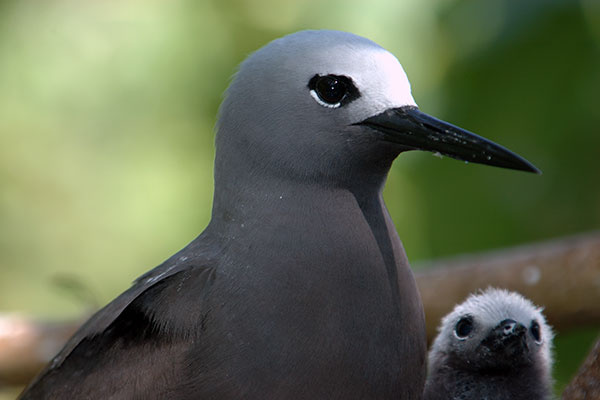
Lesser noddy / Kelek / Anous tenuirostris
Nesting exclusively in the Indian Ocean, it’s estimated that about 80,000 pairs of Lesser noddies breed on Cousin Island during the South-East monsoon season (June-August), making Cousin one of the largest breeding sites in the world. Lesser noddies build their untidy nests of leaves, seaweed and guano in the branches of trees along the coast and throughout the plateau. Noddies feed on schools of small surface-feeding fish.
brown (or Common) noddy
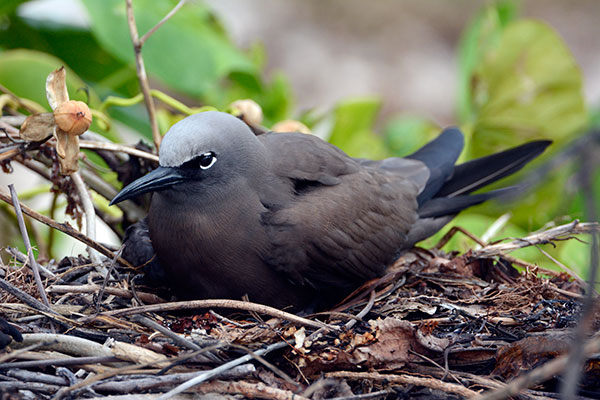
Brown or Common noddy / Makwa / Anous stolidus
Larger and browner in colour than the Lesser noddy, they are also fewer in numbers with about 1,300 pairs breeding each year on Cousin during the South-East monsoon season (May-August). Brown noddies nest among the rocks as well as in Coconut and Pandanus trees. This is probably the only native species that has actually declined since the coconut plantation has been replaced by native vegetation: a result of fewer Coconut trees for nesting.
BRIDLED TERN
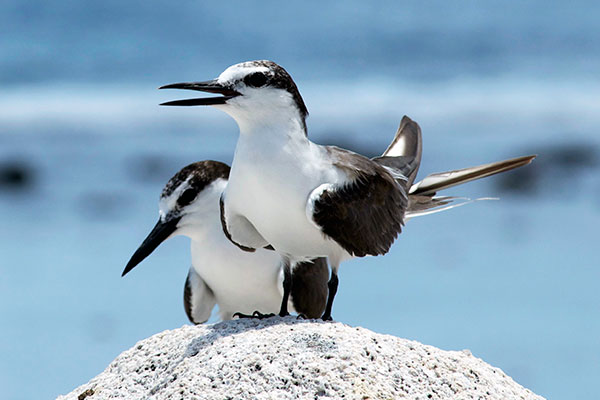
Bridled tern / Fansen / Onychoprion anaethetus
About 600 pairs of Bridled terns breed on Cousin each year. They nest among the rocks and vegetation along the coast up the hill. They have a peculiar 8 month breeding cycle. Bridled terns feed on very small fish or pieces of floating food, dipping and picking at food near the surface of the sea, often quite close to the shore.
tropical shearwater
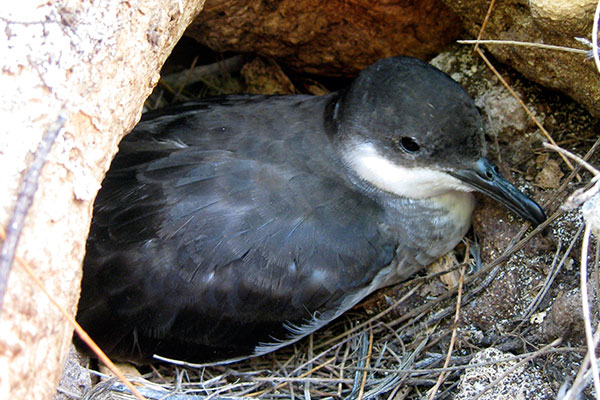
Tropical shearwater / Riga / Puffinus bailloni
Smaller and less common than the Wedge-tailed shearwater, this species can be easily identified by it’s small size and white throat and belly. As their name implies, these birds glide close to the ocean surface, skimming the waves. This species breeds year-round among the rocks on the hill. This species feeds on fish and squid, usually near to the surface but is capable of diving to a depth of 35m.
wedge-tailed shearwater
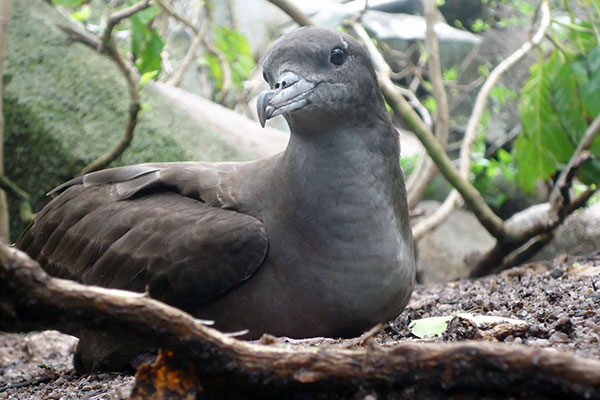
Wedge-tailed shearwater / Fouke / Ardenna pacifica
These birds are grey-brown in colour and breed from October to March in burrows among the rocks and trees on the hill, and feed on fish and squid. A census of the 1999 breeding population indicated that about 15,000 pairs nest on Cousin. Research undertaken on Cousin found that the Wedge-tailed shearwater is capable of diving to a staggering depth of 66m! The fat chicks once exploited for human consumption are now protected.
greater frigatebird
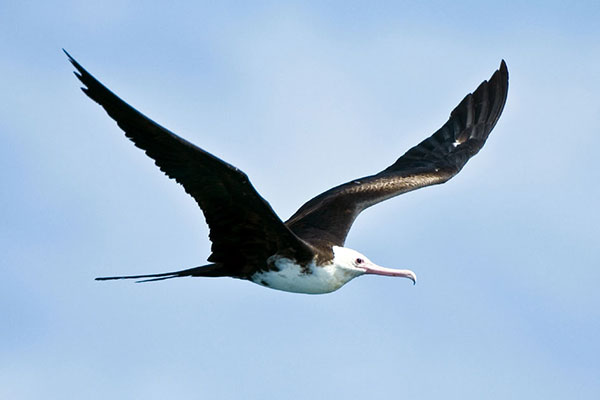
Greater frigatebird / Gran fregat / Fregata minor
You can’t miss this huge bird if you see it – it is the largest bird in Seychelles and has long angular wings, and a long thin forked tail. The adult male has a bright red throat patch that it inflates during courtship rituals, and the females and young have a white chest. In Seychelles, Frigatebirds only breed on Aldabra atoll, but they can be seen around Cousin Island in the non-breeding season from November to May searching for feeding sites.

